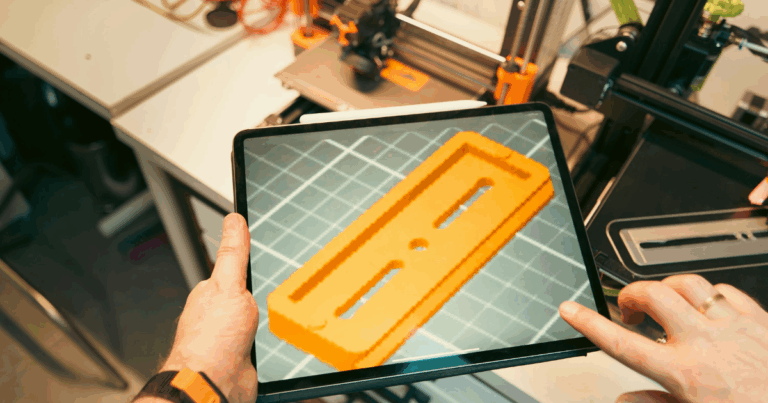There are tons of moving parts in the process of creating and selling a product. At every step, information is created that needs to be captured and shared — a lot of information. The industry developed product lifecycle management (PLM) to provide a way of managing the information generated over the lifespan of a product.
Successful product companies incorporate PLM processes to increase the quality of their products and improve their bottom line. Anyone involved in product development should understand PLM so you and your company can get the most from its implementation. This article will help you understand product lifecycle management, why so many companies use it, and how to get the most out of PLM.
What Is Product Lifecycle Management?

That’s a lot of buzzwords. Let’s try and break that down into something more practical.
Every product you make and sell has a lifecycle. It starts with an idea and finishes when the customer either throws out, recycles, or reuses the product. The idea behind PLM is to capture all information about the product throughout its entire life.
Before PLM, each person, team, or company kept the information needed for their step and passed along information.
The American Motors Corporation (AMC) developed the initial concept for PLM in the 1980s. They were a small automotive company and needed a competitive advantage. So they started tracking their products from initial concept to end-of-life. Moving from shuffling paper bill of materials documents to an integrated software system was a game-changer for them.
When Chrysler acquired AMC, they quickly saw the advantages of this approach. They liked it so much that they applied it to their entire product line and soon became the lowest-cost auto manufacturer in North America. Other companies soon took note, and by the turn of the century, PLM became a standard way to integrate processes and data into an “information backbone” for an entire company and its supply chain.
To better understand product lifecycle management, you need to understand the steps in a product’s journey from inception through product launch till end-of-life. The first three steps are part of the new product development (NPD) process and the last two deal with what happens after the product is sold.
- Product conceptualization: Conduct market, product, and customer research, capture customer needs, define product requirements, carry out ideation to create the basic product concept.
- Product design: Flesh out the product and create a complete design that is ready for manufacturing.
- Production and distribution: Set up and carry out procurement, manufacturing, and distribution to customers.
- Service and support: Track any service and support provided for the product. This can be done for the entire product line, or if value-added, tracked by serial number.
- Retirement: Capture what happened to the product when the customer stopped using it, especially if it was recycled or returned for reuse.
Think of PLM as a way to capture and manage the information created as part of each of the steps above.
Components of a Product Lifecycle Management System
A company’s PLM systems consist of a variety of tools. The most common are:
- Systems engineering (SE): Describes the desired and measured system-level behavior of the product.
- Product and portfolio management (PPM): Stores and connects requirements, performance, risks, and opportunities across your product portfolio.
- Computer aided design (CAD): Creates and stores documentation of your product’s design.
- Manufacturing process management (MPM): Plans and monitors your manufacturing.
- Product data management (PDM): Links all of the information under a document management system with change management control.
The manufacturing industry loves their two- to four-letter acronyms. You need to remember that each of these is a software tool with a database that stores product information for a given step, and they are tied together in your product data management system. Other tools, like your customer relationship management (CRM), supply chain management (SCM), or enterprise resource planning (ERP) tools, may be integrated.
Transferring Information Between Stages
These tools are used to capture information at each of the steps in the product lifecycle journey, and move information to the people working on each step. A great example of how this works is the transition from design to manufacturing. The product development team needs to understand the needs of manufacturing and incorporate design for manufacturing, DFM, into their decisions for the product. And, once the design is transferred to manufacturing, that team needs clear access to the product definition.
The tools in a PLM system are used to capture, transfer, and track that information. Without a well-implemented product lifecycle management, the information does not flow up and down the process and critical mistakes can be made. For our example of design for manufacturing, PLM helps the product development team avoid creating a product that can’t be easily made.
What Are the Benefits of Product Lifecycle Management?

Every company and product will see different benefits from a well-implemented PLM process. Here are the most common benefits:
1. Shorten Time to Market
PLM’s most obvious benefit is how information is easily captured and transferred. This allows research, product design, and manufacturing to move much faster and with more information. As an example, by linking design and manufacturing through PLM, design for manufacturing takes less time.
2. Reduce Costs
The information found in a product lifecycle management system allows the entire team to optimize processes and materials better across business systems. With an accurate description of your product available to everyone on the team, you can make intelligent and informed decisions that drive down costs.
3. Increase Productivity
By reducing both time to market and costs, your company can increase productivity, getting more value from every employee, supplier, and production partner. It also provides information to project management that allows them to streamline and automate processes.
4. Decrease Compliance Issues
A PLM system provinces a single version of the truth that is easily accessed. This enables your quality and compliance teams to get the right information quickly and make informed decisions.
5. Improve Product Quality
At its core, a product lifecycle management system defines a product, and accurate product definition is fundamental to quality management. With a good PLM system, you define, measure, and improve your product’s quality more efficiently.
6. Provide Product Insight
PLM gathers product information in one place for use by every member of your research, design, manufacturing, and support team to identify issues, point out advantages, and gain real-world insight into your product.
7. Reduce the Frequency of Fumbled Information Handoffs
The biggest problem with not having a PLM system, the processes and tools that are used to manage your product’s lifecycle, is the major rework required when information is not transferred between steps of a product’s journey. Not designing to requirements, getting design for manufacturing wrong, and not learning from customer input through support all lead to costly and time-consuming rework. PLM lessens or removes the likelihood of such fumbles.
On their own, each of these advantages can have a significant positive impact on your bottom line. They can increase revenue, reduce costs, and shorten schedules. Taken together, when PLM is done right, they can give your company a significant competitive advantage. And if your competition is using product lifecycle management correctly and you aren’t, you’re starting with a big disadvantage.
Making Product Lifecycle Management Work for Your Product

If you work in a small or mid-sized organization, you may have the separate tools that go into a PLM system but no way to connect them. There are a lot of companies out there eager to sell you PLM tools. But that is not the same thing as having a PLM process for your products. To implement proper product lifecycle management, find a partner who doesn’t have a software bias that can understand your product and company needs. Gembah has experts that can help with this and most other aspects of bringing a product to market.
Or, you may have a virtual company where you only focus on identifying product needs and then selling the product. You work with partners for everything else. Gembah has a proven PLM solution for your team if this describes your organization. We have a platform designed to help with multi-stage and multi-party collaboration throughout your product’s lifecycle. The Gembah platform consolidates the entire product development process, and we also have people who understand the steps and overall process that our platform manages.
Product development is exciting and can make or break a company, but it isn’t easy. It requires a lot of people, data, and expertise to get it right. Some of the most challenging aspects of product development are building the right team, managing all moving parts, and knowing what to do next. Product lifecycle management is one of many important aspects that Gembah is intimately familiar with. Don’t continue on your product development journey alone. Reach out to Gembah and let us help you along the way.



